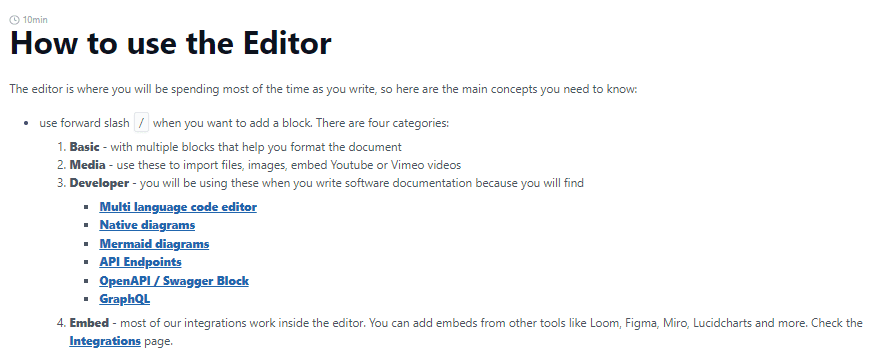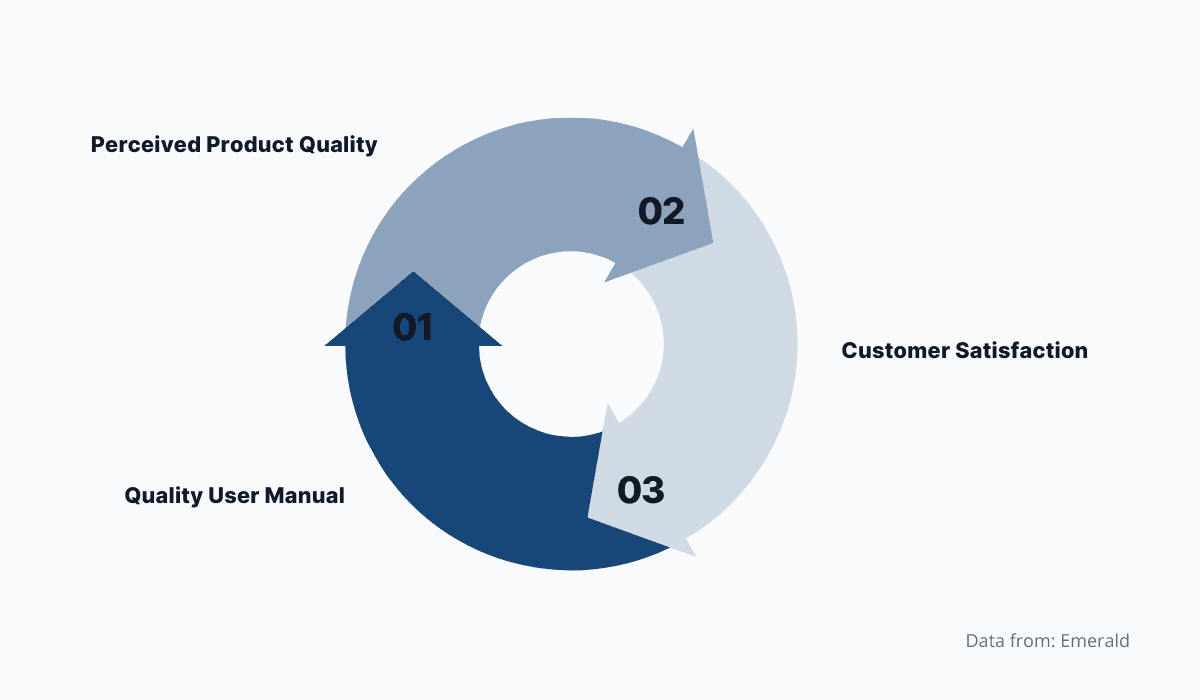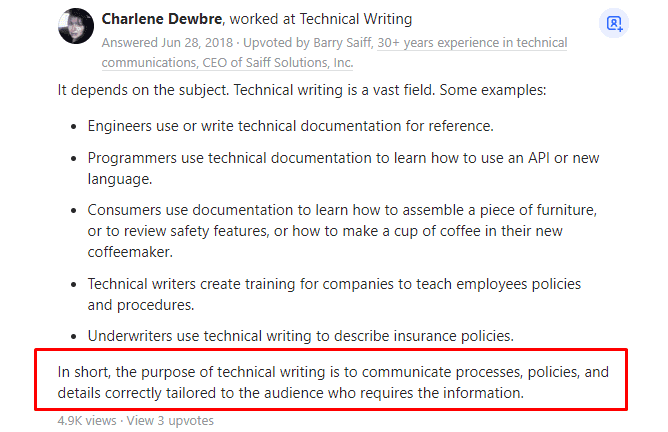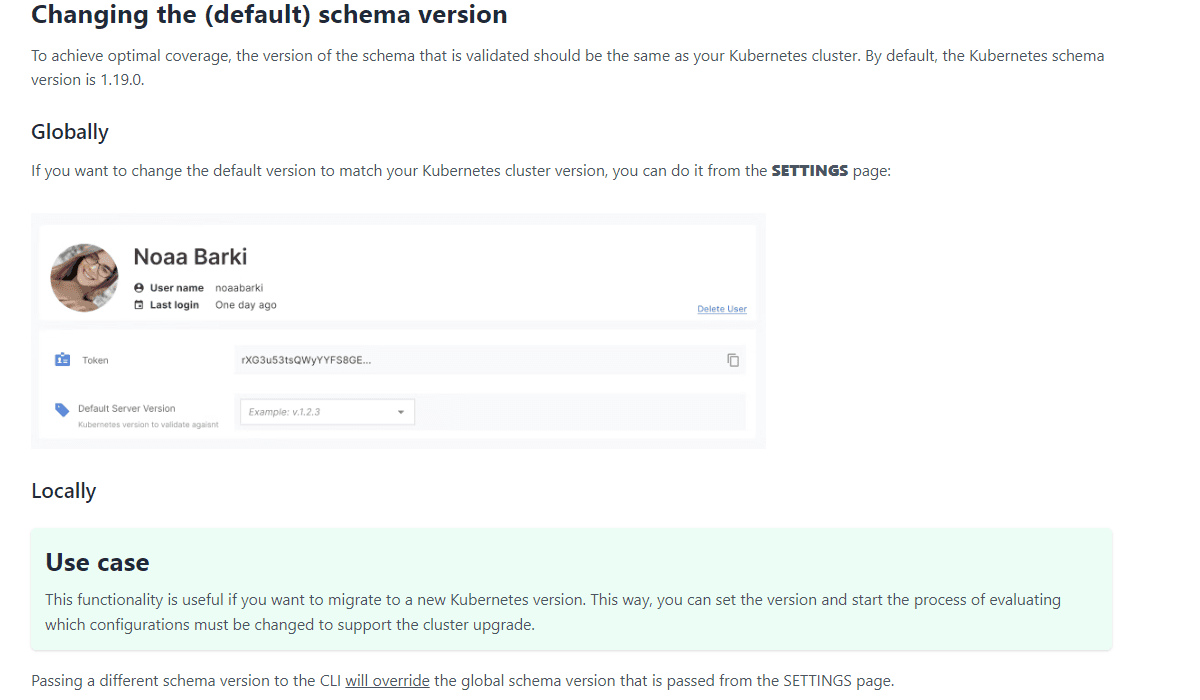Technical writing might sound complicated, but don’t let the term fool you.
That term simply refers to all the content you create to explain how certain technology and the processes related to it work.
And while it’s better to hire people who specialize in this type of writing, don’t worry if you don’t have them on your team—field experts can create tech documents too.
After all, they’re the ones who have all the knowledge about the technology at hand.
Now, let’s learn more about what technical writing entails, why it's essential for companies, and how to write technical documents well.
What Is Technical Writing
Technical writing is a form of writing that translates complex technical topics into easily digestible and understandable content.
Some think of technical writers as being “between developers and applications.” The writers take the work developers created and transform it into something even a layman can understand.
You could classify many documents out there as technical because they relate to the development and application of technology, according to the Engineers’ Guide to Technical Writing.

Source: Google Books
However, the people you hire for technical writing as a company should specialize in product descriptions, guides, instructions, and procedures since this is what you will want them to create.
These writers are there to explain what your product or service is and how to use it.
Let’s say you purchase a product or a service and get developer documentation.
Instead of clear instructions written in plain, neutral language, you get a manual filled with tech expressions and code that leaves you scratching your head.
You’ll probably have to turn to online forums or customer service to get an answer to your questions.
That’s what technical writing saves your end-users from, which is why companies are noticing its value.
In fact, the US Bureau of Labor Statistics predicts that the growth of employment rates for technical writers will be 12% in this decade, which is 4% higher than the national average.

Source: Archbee
Therefore, the Bureau expects more companies to start hiring technical writers to help them create this type of documentation.
Let’s explore what precisely technical writing brings to your company.
Importance of Technical Writing
First and foremost, technical writing helps your end-users. As a company, you want your customers to always have access to information about your products.
If they don’t, they’ll be forced to contact customer service and inquire about the details that interest them.
You can solve such issues by writing how-to knowledge base articles or adding an FAQ section in your user guide.

Source: Archbee
By sharing your tech docs with your customers, you’re allowing them easy access to every piece of data you have on your product. That way, you’re keeping them informed and satisfied.
Technical writing also ensures your product does its job and doesn’t become useless.
Without good supporting documentation that explains how to get the most out of the product, customers won’t use it to its full potential.
They’ll fail to see what the product can do for them and turn to another product that helps them understand this.
Research found that the quality of your user manual can influence the perceived quality of the product at hand and customer satisfaction.

Source: Archbee
In other words, people will judge the quality of your product based on how well-written your supporting documentation is.
Among its many other benefits, technical writing helps you document your work, which leads to knowledge preservation and process improvement.
The Engineers' Guide to Technical Writing points out that undocumented work can get lost forever.
Employees might forget the steps they took to finish a project or leave the company, taking their unique insights with them.
When you write down the steps you take to complete a certain task, you can always go back to them and use them for future projects.
Of course, if you notice certain things are outdated or not as helpful, you can change the process and documentation for the better.
The Goal of Technical Writing
When you create technical documentation, your goal should be to educate the readers, no matter who they are.
Your audience can vary from beginners to experts, but the focus should stay the same regardless of the intended audience.
For example, your technical writers explain to users how to use your product and service, what its parts and features are for, and how to solve the most common issues.
Usually, the documentation should reach your end-users, not just experts and your team, so the writers have to put in a lot of effort to express all the technical and complicated terms in simple, easily understandable language.
So, it’s no wonder Your Dictionary states that the primary goal of such writing is to “provide complex information to readers in a way that they can understand and apply, even if they don’t have prior knowledge of the topic.”
However, in cases where your target audience consists of people who are experts in the field, your goal is not to offer information on the basics but go in-depth and help them understand your product or process.
Because of this, the definition created by Charlene Dewbre, an experienced tech writer, might be even more to the point.
Dewbre defines the purpose of tech writing as communicating processes, policies, and details in a way tailored to the audience in need of all this data.

Source: Quora
Notice how Dewbre didn’t mention simplified language? It’s because not all audiences need you to explain things in basic terms.
Some require more complex information. Now that we’ve explained the goal of technical writing, we will see the different types to understand the audience a bit better.
Types of Technical Writing
Every piece of writing that explains technology, how it works, how to fix it, or reports on some of its features is considered to be technical writing.
So, to narrow it down, here are the three categories of tech writing:
- Customer-oriented
- Expert-to-expert
- Technical Marketing
Customer-oriented technical writing is the type of content you create for the end-user, and it’s the most common type.
Usually, this includes user manuals, FAQ sections, knowledge bases, company wikis, online help centers, and any other technology knowledge-sharing method with your audience.
Those illustrations you get with your IKEA furniture? Technical writing!

Source: IKEA
Even though there’s nothing written in the manuals other than the general warnings, everyone can understand what they must do because the pictures illustrate every step.
Many other excellent examples of user guides can be found online. Almost every company that offers its products and services online has at least an FAQ section on the website.
Others, like Slack, have an entire help center dedicated to answering questions.

Source: Slack
Their users who want to learn how to set up the app, edit their profile, and start using different features can quickly find out more because
Slack offers easy access to their technical documentation.
Expert to expert tech documentation includes scientific research papers, medical case studies, business reports, and legal case reviews.
Technical writers who work on such content are experts in the field or understand it well enough to explain certain things to other experts and professionals.
You can find technical documents on websites like the Journal of Medical Case Report. Medical professionals from different clinics and trauma centers wrote the case report below.

Source: Journal of Medical Case Report
Clearly, the report contains medical terms that non-experts would have to look up if they wanted to understand the text in its entirety.
However, the documentation doesn’t have to be plain and straightforward when it comes to expert-to-expert writing.
Since the target audience understands the industry and tech terms, writers don’t have to steer away from them and simplify their language to make sure non-specialists understand it.
The last category is technical marketing documentation, which encompasses content like white papers, surveys, marketing-related case studies, and business plans.
This type of content promotes a product or service to the desired audience.
For example, Dove created a whitepaper that promoted DoveMen+, a line of men's products.

Source: Dad Central
At the same time, the whitepaper talks about the company championing male parental leave.
Companies often invest in materials to promote their products and actions to a broader audience and potentially garner new customers.
The Technical Writing Process
The three most important things for an excellent technical writing process are access to information, audience research, and good writing.
Without them, your technical writers won’t reap good results.
Audience Analysis
When a writer gets a new project, they should start with identifying the audience.
Who is the buyer persona? Who will be reading their work? This knowledge is essential to writers of this kind, which is why you can see writers share the same sentiment on social media.

Source: Twitter
The consensus seems to be that the audience dictates the documentation.
For example, if they’re writing for a developer audience, the writers know they don’t need to oversimplify the instructions.
After all, developers will understand industry terms and phrases and might not find something overly simplified as helpful.
On the other hand, if the content is a user guide, the writer has to adjust the instructions to the general public, ensuring that non-experts understand the point of the product or service, how to use it, and how to fix common problems.
Ralph G. O’Brien, a statistician and technical writer, believes that “technical writers need to understand how readers read, and they must write with the reader’s perspective in mind.”
To do that, they first have to figure out their characteristics and knowledge levels.
Access to Data
Here’s what your technical writers need to write quality tech documentation: access to information.
Without easy access to company and project documents, writers will spend most of their time trying to find more about the topic of what they’re writing. This happens so much that tech writers jokingly tweet about it.

Source: Twitter
But it’s not a joke. Having helpful information is critical if you want to educate others.
After all, a tech writer’s job is to gather all that data and translate it into simpler terms for the audience that needs this type of content.
If they don’t fully understand the process or technology themselves, how can they expect the readers to?
Knowledge management comes in handy here, as it allows you to always document everything that’s going on and then quickly locate these files.

Source: Twitter
According to tech writers, successful companies foster a culture of documentation. They promote a culture of knowledge sharing and make a company wiki or a knowledge base to share this information with the entire team, including the people in charge of creating technical writing.
With documentation software like Archbee, it’s practically effortless to upload and create tech documents, share them with the team and clients, and update them when necessary.
Good Writing
While writing is pretty subjective, there are some key points a piece of written content has to have to be helpful to the end customers.
In the case of tech documentation, the first thing that comes to mind is readability. This point includes breaking your text into paragraphs, formatting, interlinking, stressing essential parts, using visuals, adding different media types, and the like.
Here’s how Datree does it through Archbee.

Source: Datree
They use screenshots to give examples, accentuate a part of the text they find essential, and use bold letters to make specific points stand out.
Writers like Olamide 'Pearl' Makinde suggest formatting the text “for a better explanation, for readability sake, and to keep your reader interested.”
In other words, formatting serves to make the text more dynamic and easier to digest.
In other words, formatting transforms the tech document into something more than just written instructions.
Still, your text should be simple if you want most people to get something out of it.

Source: Twitter
GitHub engineer Jaana Dogan agrees that simplicity is vital. Instead of using what engineer Sophie Alpert terms “fancy words,” stick to the vocabulary used by your target audience to properly transfer knowledge to them.
This rule doesn’t apply to content written for a knowledgeable audience.
Nevertheless, focus on making your text easy to understand and read, which will steer you in the right direction and help readers learn something from your work.
If something leaves room for doubt, explain it better. If a specific turn of phrase might be taken the wrong way, express yourself differently.
The more you edit your technical writing, the better the result!
Conclusion
Technical writing is an umbrella term for different types of writing focused on technology or aspects of it.
Technical writers create content for customers, experts, or marketing purposes.
In all three cases, technical writers need to understand the subject and transfer that information into something easily understandable for the target audience.
With good technical documentation software, you’ll be able to upload and share the files with this audience, seamlessly updating the technical documentation when something new arises.
Frequently Asked Questions
Technical writing is the craft of explaining complex technology so people can successfully use a product, system, or process. It turns expert knowledge into clear, usable information tailored to a specific audience.
It commonly includes:
- User guides, quick-starts, and troubleshooting articles
- FAQs, knowledge bases, and in-app help
- API documentation, SDK and developer guides
- Standard operating procedures (SOPs) and runbooks
- Release notes, architecture overviews, and design docs
- White papers and solution briefs
Good technical writing is accurate, task-focused, and easy to follow—so readers can understand what to do, why it matters, and how to do it correctly.
